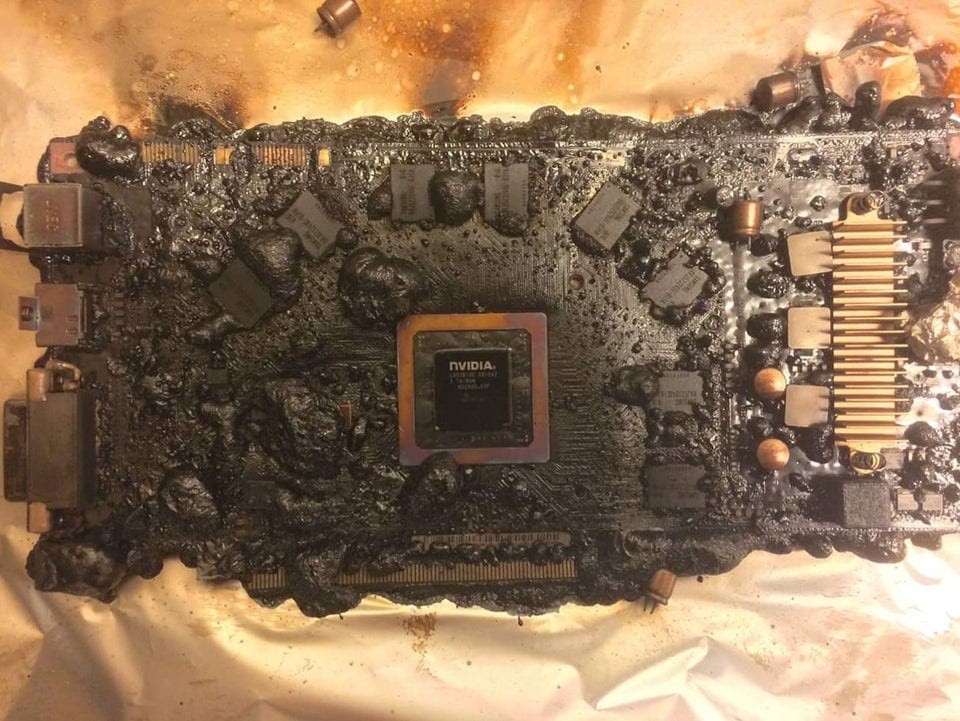Short answer – NO. In mining, GPU lifespan can be more than 5 years. But it depends. On what? Let’s delve.
In the world of cryptocurrency, one question that often surfaces is, “Does crypto mining damage GPU?” This query is not without reason, as the process of mining digital currencies like EthereumPOW and Nexa heavily relies on the power of Graphics Processing Units (GPUs). This article aims to delve into the heart of this issue, providing a comprehensive understanding of the relationship between crypto mining and GPUs.
The Role of GPU in Crypto Mining
To fully comprehend the potential impact of crypto mining on GPUs, it’s essential first to understand why GPUs are so integral to this process.
Why Does Crypto Mining Use GPU?
Cryptocurrencies, particularly Ethereum Classic and Ravencoin, are built on complex mathematical problems. GPUs, with their ability to perform multiple calculations simultaneously, are perfectly suited to solve these problems, thereby facilitating the mining process.
The Impact of Crypto Mining on GPU Lifespan
The lifespan of a GPU can be significantly influenced by the way it is used, and crypto mining is one of the most intensive tasks that can be performed by these components. To understand the impact of crypto mining on GPU lifespan, we need to delve deeper into the nature of mining and the stress it places on the GPU.
The Nature of Crypto Mining
Crypto mining is a process that involves solving complex mathematical problems to validate transactions and add them to a blockchain. This process is resource-intensive and requires a high level of computational power. GPUs, with their multiple cores and ability to handle parallel tasks, are particularly well-suited to this kind of work. However, the constant demand placed on the GPU during mining can lead to increased wear and tear.
The Strain of Continuous Mining
Unlike gaming or other computer tasks that place intermittent loads on the GPU, crypto mining is a continuous process that can run 24/7. This constant operation can put a significant strain on the GPU, leading to increased heat output and potential thermal stress. Over time, this can result in physical damage to the GPU’s components, potentially reducing its lifespan.
Overclocking and Power Limiting: A Miner’s Strategy

In the realm of crypto mining, overclocking is a common practice. However, it’s not the reckless push for maximum speed that some might imagine. Instead, miners often pair overclocking with power limiting strategies to optimize performance while keeping their GPUs cool and efficient.
Overclocking, in essence, involves increasing the clock rate of the GPU, making it work harder and faster. This can lead to increased mining efficiency and, consequently, higher profits. However, without careful management, it can also increase the heat output of the GPU, potentially leading to faster component degradation.
This is where power limiting comes into play. By setting the GPU’s power limit to a level below its maximum capacity – typically between 60% and 80% – miners can control the amount of electricity the GPU uses. This strategy helps to keep the GPU’s temperature in check, reducing the risk of overheating and prolonging its lifespan.
In this way, miners can strike a balance between performance and longevity. They can maximize their mining profits without pushing their GPUs to the brink, thereby maintaining a cool and efficient mining operation. This approach demonstrates that with the right knowledge and techniques, the impact of crypto mining on GPU lifespan can be effectively managed.
The Role of Cooling and Maintenance

The impact of crypto mining on GPU lifespan can be mitigated with proper cooling and maintenance. GPUs under heavy load generate a lot of heat, and without adequate cooling, this heat can lead to component failure. Regular cleaning to remove dust and prevent clogging, along with monitoring of GPU temperatures and load, can help maintain the health of the GPU and extend its lifespan.

In conclusion, while crypto mining can have a significant impact on GPU lifespan, this impact can be managed and mitigated with proper care and understanding of the mining process. It’s crucial for miners to balance the potential profits of mining against the potential costs of reduced hardware lifespan and increased energy consumption.
FAQs
What Does Mining Do to a GPU?
Crypto mining puts the GPU under continuous strain, as it is used to solve complex mathematical problems. This can lead to overheating and, if not properly managed, could potentially reduce the lifespan of the GPU.
Why Does Crypto Mining Use GPU?
Crypto mining uses GPU because of its ability to perform multiple calculations simultaneously. This makes it more efficient at solving the complex mathematical problems that underpin cryptocurrencies.
Conclusion
In conclusion, while crypto mining can potentially damage your GPU, the extent of this damage can be significantly mitigated with proper care and maintenance. Understanding the relationship between GPUs and crypto mining can help you make informed decisions and protect your hardware. Remember, a well-maintained GPU can serve both as a powerful tool for crypto mining and for other computing needs.


